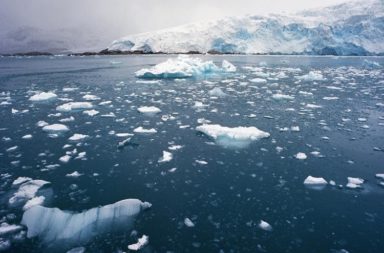-Prof. Rasal Singh
The topic of climate change has been the hottest topic of the 21st century, and its relevance keeps increasing with each passing decade. There is no doubt that global warming has adverse effects on the environment. Environmentalists’ fears have been confirmed by the Intergovernmental Panel on Climate Change (IPCC) Sixth Assessment report. The report confirms that the current steps towards a net-zero Greenhouse gas (GHG) emission are lacking, and that human influence is the primary cause of rising climate adversities. By analyzing 1400 scientific publications, the report summarized the findings of 234 researchers. This report provides a physical-scientific basis for climate change and confirms that some of the ongoing climatic disasters cannot be avoided.
Some of the key findings of the report
The report highlights that the extent of global warming has been progressively increasing at a faster rate than the feared levels. It has explicitly mentioned “Human influence” as the cause of the extremism with global warming of 1.5 degrees celsius threatening to become a reality by 2030, ten years earlier than the forecast. At present, the natural CO2 absorption capacity of the environment has reached saturation levels. Until now forests, soils, and oceans have been absorbing some of the human-made CO2 emissions, however, it fears that this absorption will decrease dramatically shortly.
It further claims that the frequency of weather extremes will increase incessantly than the current and this trend will continue even if humanity is able to cap global warming at 1.5 degrees. The frequency of severe heat waves occurring every 50 years will reduce to every 10 years. Strong tropical storms, increasing rain and snowfall, and frequent and intense fires will characterize the climate in the upcoming years. Severe agricultural and environmental droughts will be 1.7 times more, jeopardizing the economies and food requirements of the world. The sea levels will continue to rise as an outcome of the shrinkage of ice sheets and ever-rising temperatures. Oceanic currents regulating the heat transfer can abruptly stop. The amazon rainforests can turn savannas.
In the wake of this adverse climate change, the authors of IPCC reports have called for immediate net-zero emissions from all the countries. It has been feared that even if the countries are able to minimize emissions to net-zero, they will still have to face the dire consequences of the environmental tragedy. While immediate measures to reach a net-zero emission level might be an achievable goal for the developed economies, it acts as a major concern for underdeveloped and developing economies like India.
Climate impacts in India
In recent times, India has emerged as a global leader in standing up for climate change. The 2015 Paris Climate Agreement is the most recent initiative taken up by India along with other countries. However, the trailing impact of the COVID-19 pandemic on the economy can be still felt. In such a scenario, this immediate need for zero-emission will be no less than another shock to the economy of India.
At the same time, the climate change report of India is itself concerning. According to a report by the Pune-based Indian Institute of Tropical Meteorology (IITM), there is significant evidence that anthropogenic activities have influenced the Indian regional climate. The report has characterized the Indian subcontinent climate as a complex interaction of land, ocean, atmosphere, and cryosphere system on different space and time scales.
The report claims that human activities have led to increasing heat extremes, changing monsoon patterns, and a rise in sea levels. The temperature of India has risen by 0.7 degrees celsius between 1901 and 2018. The annual mean, maximum, and minimum temperature averages during 1986-2015 have shown increasing trends of 0.15, 0.15, and 0.13 per decade respectively. The Pre-monsoon climate was characterized by extremely high temperatures. Warm extremes have become quite frequent in India especially during 1951-2015 with accelerated trends during 1936-2015. India has observed a significant increase in the temperature of the warmest day and night as well as the coldest night since 1986. This increase has been quite non-uniform with the highest records in the eastern parts of the Indo-Gangetic plains and adjoining central India. The report further predicted that if immediate steps are not taken then the temperature will rise by circa 4.4 degrees celsius between 2070-2099.
An increase of 1 degrees celsius during 1951-2015 has been observed in the Sea Surface Temperature, which is higher than the global SST of 0.7 degrees celsius. The temperature has a significant effect on Indian Monsoon patterns, especially the June-September Monsoon. A decline in the annual rainfall and summer monsoon mean rainfall has been observed during 1951-2015. The most affected regions are the Indo-Gangetic Plains and the Western Ghats. Localized rainfall has increased leading to incessant downpours and flood-like situations. In the most recent years, India has seen massive destructive floods in various parts of the country. The rainfall pattern has been adversely affected with more and more scattering. Water scarcity has increased leading to a recession in the groundwater table level. The report has claimed the increased concentration of anthropogenic aerosols, GHG emissions, and improper land use to be the significant factor.
The Himalayan region has experienced declining snowfall and increased temperatures in recent years. Retreats of glaciers have become a constant source of tension. The Hindu Kush Himalayan region has experienced 0.2 degrees celsius rise in temperatures per decade between 1951-2014. The even higher elevated region (>4Km) experiences a rise of 0.5 degrees Celsius per decade. Experts have predicted that the temperatures will keep on increasing till the end of the 21st century by circa 4-5 degrees celsius.
What are the options available to India?
To policymakers, the findings of IPCC reports are worrying. The report has made its case of the existence of climate change and an immediate need to take action from world economies. But for India, it is a dead-end-like situation. Cutting on carbon emission is unfeasible for a developing economy like India which has just recovered from the greatest GDP reductions of the decade. But not doing so will put India under domestic as well as international pressure for immediate climate change policy and measures.
One way of dealing with this situation is the prompt realization of the need of the hour, i.e. a holistic policy which not only aims at boosting the economy but also cuts carbon emission significantly, a major paradigm shift to least emission. India is blessed with enormous green and inexhaustible sources of energy like solar energy, wind energy, geothermal energy, etc. These must be explored and exploited immediately. India must explore its solar and wind energy reserves. With the development of infrastructure, these green sources can essentially replace conventional sources. Solar lights should be installed in all government buildings and officials should be encouraged to choose carpool or public transport. This will reduce the pressure on conventional coal-petroleum based sources for meeting energy needs.
Investing in the electrical automobile industry will significantly reduce vehicular GHG emissions. People should be given incentives to switch to electrical vehicles. A roadmap must be prepared to ensure the smooth functioning of electrical vehicles on highways and roadways. Efficient implementation of the new vehicle scrappage policy will become a game-changer. A comprehensive and detailed policy document for industries should be prepared to guide them on how to minimize pollution and reach a net-zero carbon emission by 2030. The millionaire businesspersons should be motivated to perform their corporate social responsibility and invest in initiatives to control climate change.
India can adopt a bottom-up approach by developing villages and small cities to make them emissions and coal-free. This will reduce the potential issue of haves and have-nots at the base level. Even today, agriculture is the main occupation of 50% Indian population and due to traditional methods, it has also been a major cause of environmental degradation. Agricultural reforms should be brought that provide a more green solution to farmers over traditional methods like burning husks. The use of chemical-based fertilizers should be discouraged and green fertilizers and manures should be popularized. Incentives and awareness should be provided to farmers for adopting green farming techniques.
Massive plantation drives and protection of forests must be given utmost priority. The all around consumerist culture must be discouraged and needs and necessities be prioritized over desires and luxuries. Mahatma Gandhi once said that “Earth provides enough to satisfy every man’s needs, but not every man’s greed ”. Gandhi ji and Pt. Deen Dayal Upadhyay repeatedly emphasized that the earth has enough resources to support all of humanity. However, it cannot support a luxurious lifestyle for all of us.
Civil society should wake up and seek immediate disposition of measures from the officials. They should act as the watchdog of these reforms and make the government accountable for its actions. Awareness and relevant skills should be imparted to the young population.
Bringing up immediate measures to reach a net-zero emission level is an impossible task for developing countries like India considering their dependence on fossil fuels and lacking technology. Hence, the developed economies should come forwards and support these developing countries in adopting more and more green measures. This can be achieved by investing in developmental programs, providing technical know-how, etc. They are obliged to give this cooperation and support as they damaged environment greatly post industrial revolution.
The IPCC report is an eye-opener and another challenge for global citizens. The ramifications of Climate Change and Environmental Degradation transcends national boundaries. It is high time for India to realize the immediate need and act according to it with urgency. The approach shouldn’t be narrowed down to Climate Change but should include economic development as well. For a developing nation like India, Environment and Economy should go hand in hand so that neither of them suffer.
(The author is Dean, Students’ Welfare, Central University of Jammu.)





